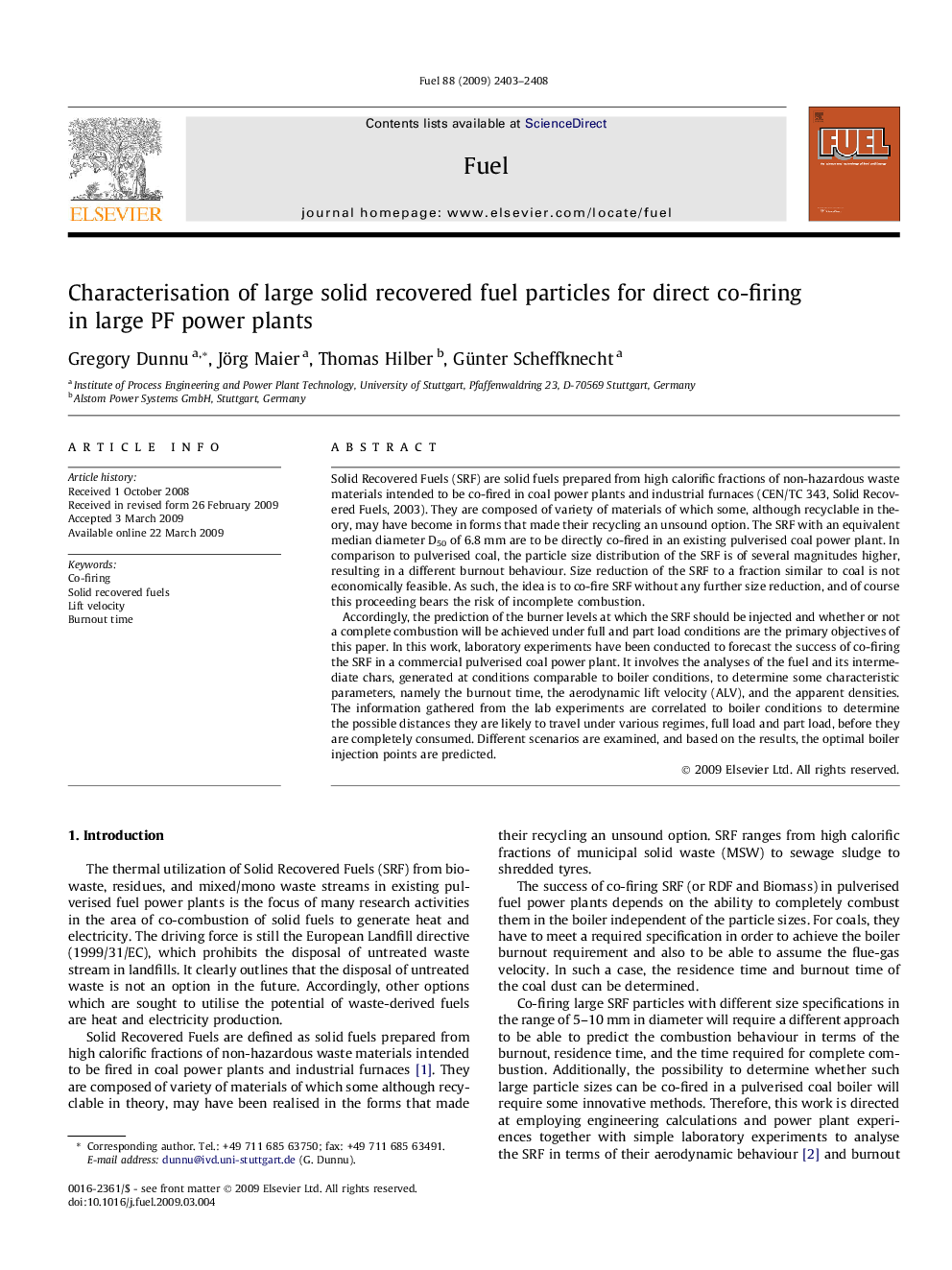| کد مقاله | کد نشریه | سال انتشار | مقاله انگلیسی | نسخه تمام متن |
|---|---|---|---|---|
| 207846 | 461228 | 2009 | 6 صفحه PDF | دانلود رایگان |

Solid Recovered Fuels (SRF) are solid fuels prepared from high calorific fractions of non-hazardous waste materials intended to be co-fired in coal power plants and industrial furnaces (CEN/TC 343, Solid Recovered Fuels, 2003). They are composed of variety of materials of which some, although recyclable in theory, may have become in forms that made their recycling an unsound option. The SRF with an equivalent median diameter D50 of 6.8 mm are to be directly co-fired in an existing pulverised coal power plant. In comparison to pulverised coal, the particle size distribution of the SRF is of several magnitudes higher, resulting in a different burnout behaviour. Size reduction of the SRF to a fraction similar to coal is not economically feasible. As such, the idea is to co-fire SRF without any further size reduction, and of course this proceeding bears the risk of incomplete combustion.Accordingly, the prediction of the burner levels at which the SRF should be injected and whether or not a complete combustion will be achieved under full and part load conditions are the primary objectives of this paper. In this work, laboratory experiments have been conducted to forecast the success of co-firing the SRF in a commercial pulverised coal power plant. It involves the analyses of the fuel and its intermediate chars, generated at conditions comparable to boiler conditions, to determine some characteristic parameters, namely the burnout time, the aerodynamic lift velocity (ALV), and the apparent densities. The information gathered from the lab experiments are correlated to boiler conditions to determine the possible distances they are likely to travel under various regimes, full load and part load, before they are completely consumed. Different scenarios are examined, and based on the results, the optimal boiler injection points are predicted.
Journal: Fuel - Volume 88, Issue 12, December 2009, Pages 2403–2408